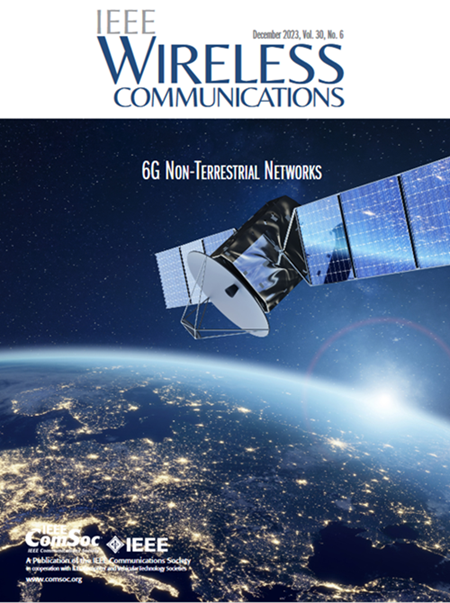Decentralized Spectrum Access System: Vision, Challenges, and a Blockchain Solution
IF 10.9
1区 计算机科学
Q1 COMPUTER SCIENCE, HARDWARE & ARCHITECTURE
引用次数: 18
Abstract
Spectrum access system (SAS) is widely considered the de facto solution to coordinating dynamic spectrum sharing (DSS) and protecting incumbent users. The current SAS paradigm prescribed by the FCC for the CBRS band and standardized by the WInnForum follows a centralized service model in that a spectrum user subscribes to a SAS server for spectrum allocation service. This model, however, neither tolerates SAS server failures (crash or Byzantine) nor resists dishonest SAS administrators, leading to serious concerns about SAS system reliability and trustworthiness. This is especially concerning for the evolving DSS land-scape where an increasing number of SAS service providers and heterogeneous user requirements are coming up. To address these challenges, we propose a novel blockchain-based decentralized SAS architecture called BD-SAS that provides SAS services securely and efficiently, without relying on the trust of each individual SAS server for the overall system trustworthiness. In BD-SAS, a global blockchain (G-Chain) is used for spectrum regulatory compliance while smart contract-enabled local blockchains (L-Chains) are instantiated in individual spectrum zones for automating spectrum access assignment per user request. We hope our vision of a decentralized SAS, the BD-SAS architecture, and discussion on future challenges can open up a new direction toward reliable spectrum management in a decentralized manner.分散式频谱接入系统:愿景、挑战和区块链解决方案
频谱接入系统(SAS)被广泛认为是协调动态频谱共享(DSS)和保护现有用户的实际解决方案。目前FCC对CBRS频段规定的、WInnForum标准化的SAS模式采用的是集中式服务模式,即频谱用户订阅一台SAS服务器进行频谱分配业务。然而,这个模型既不能容忍SAS服务器故障(崩溃或拜占庭),也不能抵制不诚实的SAS管理员,从而导致SAS系统可靠性和可信赖性的严重问题。这对于不断发展的DSS领域尤其重要,因为不断增加的SAS服务提供商数量和异构用户需求正在出现。为了应对这些挑战,我们提出了一种新的基于区块链的分散SAS架构,称为BD-SAS,它安全有效地提供SAS服务,而不依赖于每个单个SAS服务器的信任来实现整个系统的可信度。在BD-SAS中,全局区块链(G-Chain)用于频谱法规遵从性,而智能合约支持的本地区块链(L-Chains)在单个频谱区域中实例化,用于根据用户请求自动分配频谱访问。我们希望我们对分散式SAS、BD-SAS架构的愿景,以及对未来挑战的讨论,能够为以分散式方式进行可靠的频谱管理开辟新的方向。
本文章由计算机程序翻译,如有差异,请以英文原文为准。
求助全文
约1分钟内获得全文
求助全文
来源期刊

IEEE Wireless Communications
工程技术-电信学
CiteScore
24.20
自引率
1.60%
发文量
183
审稿时长
6-12 weeks
期刊介绍:
IEEE Wireless Communications is tailored for professionals within the communications and networking communities. It addresses technical and policy issues associated with personalized, location-independent communications across various media and protocol layers. Encompassing both wired and wireless communications, the magazine explores the intersection of computing, the mobility of individuals, communicating devices, and personalized services.
Every issue of this interdisciplinary publication presents high-quality articles delving into the revolutionary technological advances in personal, location-independent communications, and computing. IEEE Wireless Communications provides an insightful platform for individuals engaged in these dynamic fields, offering in-depth coverage of significant developments in the realm of communication technology.
 求助内容:
求助内容: 应助结果提醒方式:
应助结果提醒方式:


